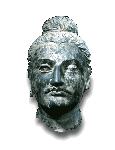
|
ARH 382 |

|
ARH 382 |
 |
>> | ID Lists | >> | ID List 10 |
Chronology:Groups and People:
- Northern Wei Dynasty (386 – 584 CE)
- Sui Dynasty (581 – 618 CE
- Tang Dynasty (618 – 907 CE
Toba Wei Also known as the “Tabgach.” A powerful group of northern nomads who became active on the borders of China after the fall of the Han Dynasty in 220 CE. In 386 CE they established a dynasty, the Northern Wei (386 – 584 CE) with a capital at Datong, and made Buddhism the state religion. They expanded further south in the late fifth century (494 CE) and established a second capital within traditional Han territory at Loyang. Uighurs One of the oldest Turkic-speaking groups that consolidated political power in the Tarim Basin region during the mid-eighth century after the collapse of the Turkish Khanates. The Uighur Empire in the Tarim region existed from 742 to 840 CE, and controlled the area around Turfan until the Mongol Empire took over in the early thirteenth century. Xuanzong Tang dynasty emperor (r. 712 – 756), during whose reign the empire began to experience severe rebellions. His legendary love for one of his concubines, Yang Kwei-fei, inspired a taste for plump women—a taste reflected in funerary art of the period.
Astana A major settlement on the Silk Road from which archaeologists have uncovered burials rich in materials. (Lit. in Turkish “capital”) Datong The first capital of the Northern Wei Dynasty (386 – 584 CE) located in the present-day Chinese province of Shansi. Loyang The second capital of the Northern Wei Dynasty (386 – 584 CE) located in present-day Honan. Turfan (Turpan) Located southeast of current-day Urumqi, Turfan was an important center for trade on the northern Silk Road. Yungang Buddhist cave temples near Datong, the Northern Wei capital. Buddhism - Jatakas:
Amba Jataka The Buddha in this life appeared as an ascetic who gave water to animals in a drought. Mahakapi Jataka Otherwise known as the great monkey king jataka. The Buddha, in this previous life, was a monkey king who used his own body as a bridge for his tribe to cross in an escape from danger.
|